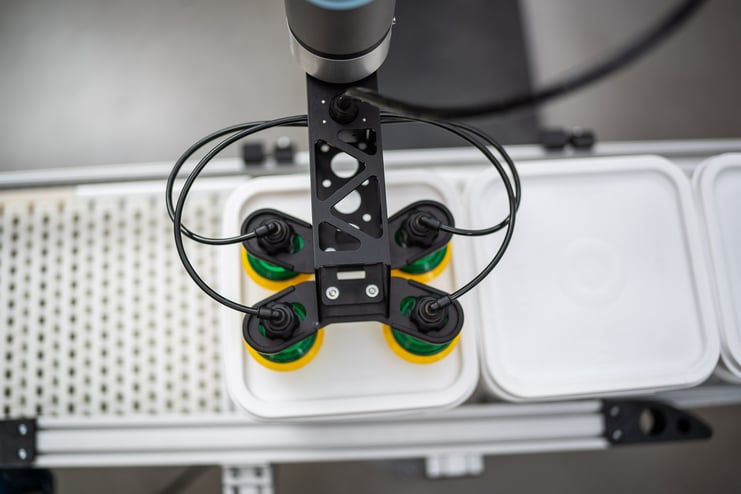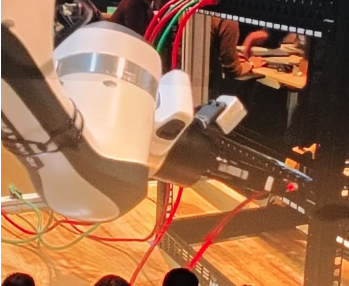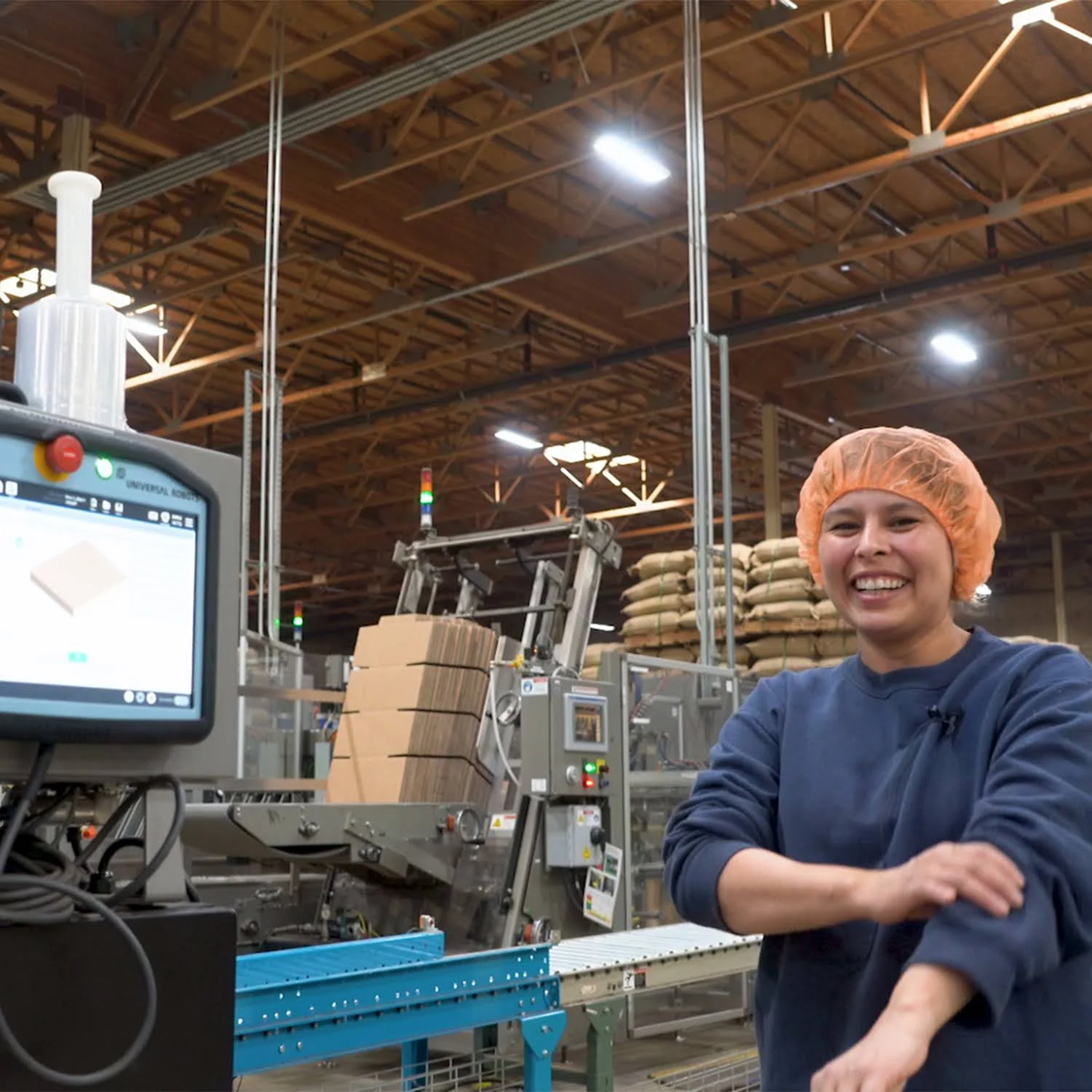Understanding Air Rating ISO 8573-1 for Reliable Robotic Palletizing

Posted on Mar 14, 2023 in Palletizing
5 min read time
ISO 8573-1 is an international standard for measuring the quality of compressed air. It's important for robotic palletizing because the vacuum grippers often used in these systems are pneumatic.
When you are using vacuum grippers for palletizing, the quality of the air can mean the difference between successfully picking a box and dropping it.
But what is the impact of air quality in your work environment on the robot?
How can you compare models of vacuum grippers and their air quality ratings?
And how do you tell what vacuum gripper will be best for your specific palletizing task?
Let's have a look at the ISO 8563-1 standard to understand how you can use it to make better decisions about your palletizing robot.
What is ISO 8573-1?
ISO8573-1 is an international standard for compressed air purity classes developed by the International Organization for Standardization (ISO). It defines a set of criteria for assessing and classifying purity of compressed air and is essential for tasks where clean air is required.
The standard comprises 8 parts that provide classes and test procedures. It classifies air quality by the type and size of contaminant or particles in the compressed air.
Sections of the standard are:
-
Purity classes for particles, water, and oil.
-
Test methods for oil aerosol, humidity, solid particle, and oil/solvent.
-
Test methods for solid particle content and microbiological contaminants.
-
Solid particle test methods.
-
Liquid water testing procedures.
From these tests and procedures, an air supply is given a rating that indicates the purity of the air.
For robotic vacuum grippers, the type of contaminant may vary depending on the specific environment that you are using the robot in. However, the most common type is particles, such as the ambient dust in a warehouse environment.
Why air quality is important for reliable robot palletizing
Air quality is a property that people often forget to consider when they are purchasing a palletizing robot. However, the air quality rating of a robotic vacuum gripper can significantly affect the robot's performance in a palletizing task.
Contaminants affect the suction force of a vacuum gripper. As a result, the air quality influences the weight of items that the gripper can lift.
Most vacuum grippers have some sort of air filtration system. However, these have different ratings in accordance with ISO 8573-1. If your gripper's filtration system can't filter the type of contaminants present in the air, it may fail to pick up boxes reliably.
If your robot is working in a clean room, you probably don't have to worry about air quality. For all other environments, you should consider the quality of the air.
How vacuum grippers use air when palletizing
The vacuum grippers often used in palletizing robots work by creating a vacuum force, typically with a vacuum pump connected to the gripper.
Vacuum grippers work by using the venturi effect, a principle that relies on the suction created when a fluid is forced through a narrow pathway. When compressed air is pushed through a venturi tube, it creates a vacuum with lower pressure than the atmosphere.
Vacuum grippers typically have two main operational parts: suction cups and an air supply (which includes a pressure regulator with an air filtration system).
During operation, the suction cups start filled with air. This air is then quickly sucked out, creating a negative air pressure in the cup which sticks the cup to the surface of the box.
If there are contaminants in the air supply, it creates a weaker lifting force by degrading the quality of the vacuum.

Comparing the air rating of 2 reliable vacuum grippers
You can see the impact of air rating on the performance of vacuum grippers by looking at different models.
At Robotiq, we have three vacuum gripper ranges: EPick, AirPick, and PowerPick. The EPick includes its own mini vacuum pump within the gripper itself – instead of using an external air supply – so it's slightly different from the other two.
Let's compare the AirPick and PowerPick to see the impact of air quality rating:
Example 1: AirPick
AirPick is the perfect choice for a huge number of palletizing tasks. It is capable of precisely lifting boxes and items for many pick and place tasks. It has a compact design for cobots and, in the right environments, offers powerful vacuum flow.
The AirPick's filtration system is rated at ISO 8573-1 Class 2-4-2. This means it provides a particle size separation of <0.1µm — which is equivalent to the grain size of corn starch.
The air filter is 5 microns, the mist separator is 0.3 micron, and the micro mis separator is 0.01 micron.
Example 2: PowerPick
PowerPick is a more powerful vacuum gripper that is designed to increase the reliability and force for lifting heavier items. It also offers many more configuration options to suit even more palletizing tasks.
The PowerPick's filtration system is rated at ISO 8573-1 Class 7-4-4. This means it provides a particle size separation of <40µm — which is equivalent to grains of plant pollen. The air filter is also 5 microns.
This rating means that the PowerPick can handle air with particle sizes 400 times larger than the AirPick.
The improved vacuum system has a maximum load capacity of 11.5 kg (25 lbs) and provides a strong suction force to ensure boxes are firmly held even in more dusty environments.
What air quality does your palletizing task need?
How can you use this information to decide which palletizing system is right for you?
When you are looking at a vacuum gripper system, identify if the air quality rating of the vacuum matches that of the environment in which it will be operating.
You can either analyze the air quality of your environment using measurement equipment. Or you could run a test application with a vacuum gripper and identify that the performance meets your needs.
By understanding what class of air purity is necessary for your particular application, you can ensure that your palletizing task is running at peak performance.
What questions do you have about air quality ratings? Tell us in the comments below or join the discussion on LinkedIn, Twitter, Facebook, or the DoF professional robotics community.





Leave a comment